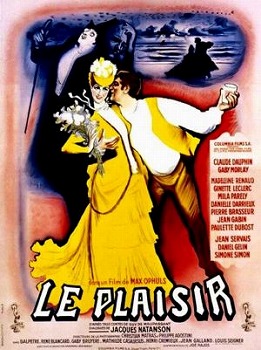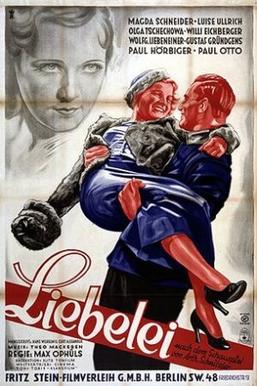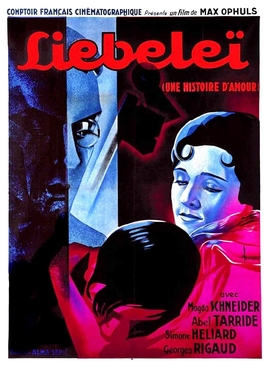Marcel Ophuls is a German-French documentary film maker and former actor, best known for his films The Sorrow and the Pity and Hôtel Terminus: The Life and Times of Klaus Barbie.

Paula Anna Maria Wessely was an Austrian theatre and film actress. Die Wessely, as she was affectionately called by her admirers and fans, was Austria's foremost popular postwar actress.
Wolfgang Georg Louis Liebeneiner was a German actor, film director and theatre director.
French writer Jacques Natanson first became involved in the movies in 1929 when one of his plays was adapted for the screen. He enjoyed a fruitful collaboration with Max Ophüls, on such films as La Ronde, Le Plaisir (1952), and Lola Montès (1955).

Isa Miranda was an Italian actress with an international film career.
Adrian Martin is an Australian film and arts critic. He now lives in Malgrat de Mar in Spain. He is Adjunct Associate Professor in Film Culture and Theory at Monash University. His work has appeared in many magazines, journals and newspapers around the world, and has been translated into over twenty languages and has regular columns in the Dutch De Filmkrant and in Caiman: Cuadernos de cine.

The Earrings of Madame de... is a 1953 romantic drama film directed by Max Ophüls from a screenplay he co-wrote with Marcel Achard and Annette Wademant. Based on the 1951 novel Madame de... by Louise Lévêque de Vilmorin, the title reflects the fact that the surname of the main character is never revealed—the few times it might be heard or seen, it is obscured by noise or a camera trick. The film is considered a masterpiece of 1950s French cinema, with film critic Andrew Sarris calling it "the most perfect film ever made".

Le Plaisir is a 1952 French comedy-drama anthology film by German-born film director Max Ophüls (1902–1957) adapting three short stories by Guy de Maupassant — "Le Masque" (1889), "La Maison Tellier" (1881), and "Le Modèle" (1883).

Liebelei is a 1933 German period drama film directed by Max Ophüls and starring Magda Schneider, Wolfgang Liebeneiner, and Luise Ullrich.
Christian Matras was a French cinematographer who worked on more than hundred feature films, including Grand Illusion (1937), directed by Jean Renoir; The Milky Way (1969), directed by Luis Buñuel; and Thérèse Desqueyroux (1962), directed by Georges Franju; Lola Montès (1955), The Earrings of Madame De... (1953), Le Plaisir (1952), La Ronde (1950), all directed by Max Ophüls; and L'Aigle à deux têtes (1948) directed by Jean Cocteau.
Seymour Nebenzal was an American-born Jewish-German film producer. He produced 46 films between 1927 and 1961.
Tony Aboyantz was a Soviet Armenian-born French film director and assistant director.

The 2nd Toronto International Film Festival (TIFF) took place in Toronto, Ontario, Canada between September 9 and September 18, 1977. Retrospective of Quebec cinema was introduced and also Greek cinema was emphasized. J.A. Martin Photographer directed by Jean Beaudin was selected as the opening film.
Hans Wilhelm was a German screenwriter. Wilhelm was of Jewish heritage, and was forced to emigrate following the Nazi takeover in 1933. After going into exile he worked in a variety of countries including Britain, France, and Turkey before eventually settling in the United States. He later returned to work in West Germany following the Second World War.
Daniel Mendaille was a French stage and film actor whose career spanned nearly sixty years.
Herman Millakowsky was a German film producer. He studied history of art and philosophy at the University of Berlin. Following the Nazi rise to power he emigrated to Paris, where he worked in the French film industry. He later settled in the United States.

A Love Story is a 1933 French historical drama film directed by Max Ophüls and starring Abel Tarride, Magda Schneider and Simone Héliard, based on Arthur Schnitzler's 1896 play Liebelei about a musician's daughter in 1890s Imperial Vienna who falls in love with a young army officer, only for him to be killed in a duel.
Léon Walther was a French film and stage actor who played on numerous occasions in Sacha Guitry's films and plays.

Liebelei is a 1894 play by German dramatist Arthur Schnitzler. It was first performed on 9 October 1895 in the Vienna Burgtheater.
Arnold Lippschitz (1901–1952) was a German screenwriter. Born the son of the playwright Arthur Lippschitz, his young brother was the art director Herbert Lippschitz. He began his film career in 1918 at the end of the First World War. Of Jewish background, he fled Nazi Germany going on to work in the French film industry where he was credited as Arnold Lipp, working among other films on Yoshiwara (1937) by Max Ophüls. Following the German invasion of France he emigrated to America, working in Hollywood where he was credited as Arnold Phillips.








